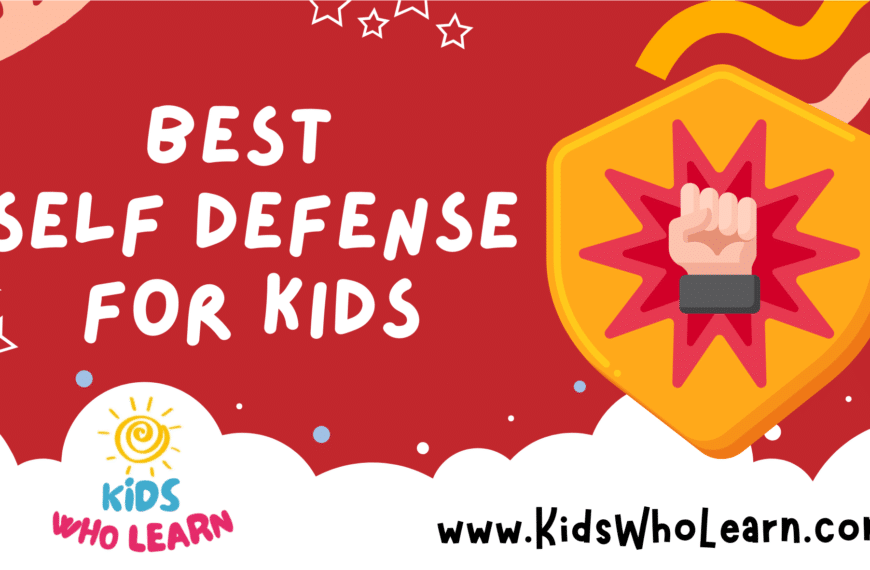Deciding on the most suitable martial art for your child can be quite the undertaking, but it’s an important decision that can have lasting benefits. Martial arts encompass a wide range of practices and each style offers its unique blend of physical and mental benefits. For children, these disciplines are more than just fighting techniques; they are pathways to build character, discipline, respect, and physical prowess.
When choosing the right martial art for your child, it’s vital to consider not only the style but also the quality of instruction, the type of equipment required, and the overall philosophy of the discipline. Some martial arts might emphasize competition and physicality, while others stress self-defense or spiritual development. Furthermore, the age and personality of your child will likely influence which martial art is the best fit for them, as some may cater better to young energy and attention spans.
Key Takeaways
- Selecting a martial art for children requires consideration of the child’s traits and the discipline’s focus.
- Martial arts offer a diverse mix of benefits, reinforcing both physical fitness and mental growth.
- Quality instruction and suitable gear are essential components for a positive martial arts experience.
Choosing the Right Martial Art
When selecting a martial art for your child, consider several factors to ensure that it aligns with their needs and interests. Not all martial arts are created equal, and the right fit can foster personal growth and development of valuable skills.
- Focus and Discipline: Arts like Taekwondo and Karate prioritize focus and discipline. These are excellent for children who thrive in structured environments.
- Respect and Self-Confidence: Judo and Aikido teach respect for others and one’s self, promoting self-confidence through interaction and cooperation.
- Coordination and Physical Fitness: If your child needs to improve coordination, look to Capoeira or Kung Fu, as they blend music, dance, and acrobatics with martial training.
Age Considerations:
- Ages 3-6: Focus on simple, fun activities with an emphasis on motor skills.
- Ages 7-9: Introduce more structured martial arts; look for a balance between discipline and play.
- Ages 10+: Younger adolescents can handle more complex techniques and begin to appreciate the deeper aspects of training, such as strategy and mental preparedness.
Personal Growth:
Encourage your child to try a few classes to gauge where they feel most comfortable. A good instructor will make all the difference, promoting a positive environment that nurtures growth.
Remember, the ultimate goal is to find a martial art that your child enjoys and from which they can derive both physical and personal benefits.
Physical and Mental Benefits
When you enroll your child in martial arts, you pave the way for a multitude of physical and mental benefits that contribute to their overall development. With each class, they inch closer to becoming well-rounded individuals through an engaging blend of fitness, self-discipline, and social engagement.
Developing Physical Fitness and Coordination
Martial arts for kids is a powerful way to integrate a robust exercise routine into their daily life. Regular practice improves their balance and coordination, essential skills for young, growing bodies.
- Physical Fitness: Engages various muscle groups for total body workout.
- Balance and Coordination: Enhances fine motor skills through detailed techniques.
Enhancing Mental Discipline and Focus
The demanding nature of martial arts requires sharp concentration and self-control. Kids learn to channel their energy efficiently, cultivating an improved focus and mental clarity that can translate into better academic performance.
- Concentration: Hones mental faculties for sharper attention.
- Self-Control: Instills discipline in thoughts and actions.
Fostering Respect and Social Skills
Respect is fundamental in martial arts. Children learn to show respect to their instructors and peers, fostering harmonious relationships and teamwork. They also pick up valuable communication skills essential for social interaction and leadership roles.
- Respect: Central to every lesson, ingraining courteous interactions.
- Teamwork: Encourages working in harmony with others.
Promoting Personal Growth and Development
Training in martial arts instills a sense of personal growth and maturity. Your child will learn the value of perseverance and setting goals, leading to a notable boost in self-esteem and confidence.
- Personal Growth: Teaches overcoming challenges.
- Self-Esteem: Builds a positive sense of self-worth.
Understanding Self-Defense and Safety
Martial arts equip children with basic self-defense techniques that enhance their sense of safety. Understanding the defense mechanisms gives them the assurance to navigate difficult situations with caution and responsibility.
- Self-Defense: Practical life skills for safety.
- Safety Awareness: Recognition and avoidance of dangerous scenarios.
Cultivating Artistic and Cultural Appreciation
Many traditional martial arts include elements of philosophy, harmony, music, and dance within their teachings. This exposure helps your child appreciate the artistic and cultural components that martial arts embody.
- Traditional Martial Arts: Gateway to cultural enrichment.
- Artistic Skills: Development through movement and rhythm.
Encouraging Long-term Health and Fitness Habits
Consistent practice of martial arts for kids fosters the establishment of healthy habits. They are more likely to continue valuing and prioritizing their physical fitness throughout their lives.
- Fitness Habits: Lifetime appreciation for health and well-being.
- Regular Exercise: Commitment to maintaining an active lifestyle.
Improving Concentration and Academic Performance
The focus and discipline gained from martial arts have a direct positive impact on academic performance. As concentration levels increase, your child will likely experience improvements in their ability to learn and remember information.
- Improved Focus: Better studying and learning habits.
- Academic Performance: Enhanced memory and comprehension skills.
Building Self-Confidence and Independence
Through achieving milestones in martial arts, children build a solid foundation of self-confidence that encourages greater independence in their decisions and actions.
- Self-Confidence: Grows with each new skill mastered.
- Independence: Empowers taking initiative and self-reliance.
Enhancing Conflict Resolution Skills
Martial arts provide strategies for peaceful conflict resolution. Your child can learn to address disagreements with calmness and respect, avoiding aggressive reactions.
- Conflict Resolution: Emphasis on non-violent solutions.
- Aggression Management: Techniques to control and redirect emotions.
Addressing Aggression and Behavioral Management
Structured martial arts programs can help children manage signs of aggression and improve overall behavior through consistent practice and reinforcement of self-control.
- Behavioral Management: Positive outlet for pent-up energy.
- Aggression Control: Transforming aggressive impulses into technique and form.
Supporting Teamwork and Community
Martial arts classes often form tight-knit communities, giving kids a chance to experience real teamwork. This environment promotes collaborative learning and collective effort toward common goals.
- Community: Becoming part of a supportive group.
- Teamwork: Engaging in group dynamics and mutual assistance.
Every aspect of martial arts training is designed to enrich your child’s life by strengthening their physique, enhancing their mind, and nurturing their social skills.
Popular Martial Arts for Kids
Choosing the right martial art for your child can contribute to their physical and mental development. Martial arts can instill discipline, improve balance and coordination, and offer self-defense skills.
Karate
Karate emphasizes striking techniques, such as punches and kicks, with a focus on discipline and mental toughness. This martial art can help your child develop power, balance, and self-confidence.
Judo
Judo involves grappling and throws, prioritizing balance and leverage over brute strength. It is an excellent way for kids to learn the importance of technique in physical confrontations.
Taekwondo
Taekwondo is known for its dynamic kicking and footwork. It can boost your child’s agility and teach them strategic ways to use their legs for both offense and defense.
Kung Fu
Kung Fu covers a wide range of Chinese martial arts with various striking techniques and acrobatics. This art teaches more than just self-defense; it encompasses a philosophy that is beneficial for personal development.
Wrestling
Wrestling focuses on grappling techniques and teaches kids how to gain control of an opponent through power and balance. It is a strong foundation for physical conditioning and combat sports.
Boxing
Boxing hones in on punches, footwork, and timing, as well as defense mechanisms against strikes. This sport is excellent for developing hand-eye coordination and cardiovascular fitness.
Brazilian Jiu-Jitsu (BJJ)
BJJ emphasizes grappling and chokes and is a top choice for self-defense. The art teaches children how to defend themselves against larger opponents by using leverage and technique.
Muay Thai
Known as the “Art of Eight Limbs,” Muay Thai utilizes elbows, knees, punches, and kicks, along with the clinch. It’s great for kids to develop striking techniques coupled with clinch work.
Capoeira
Capoeira combines dance, acrobatics, and music, offering a unique blend that is as cultural as it is physical. It encourages rhythm, coordination, and the use of the body in expressive ways.
Aikido
Aikido focuses on fluid motion and the principle of harmony rather than confrontation. It incorporates throws and joint locks and can be particularly good for teaching kids peaceful self-defense strategies.
MMA for Kids
Mixed Martial Arts (MMA) for kids integrates various techniques from striking to grappling, providing a comprehensive approach to martial arts. This sport can help children understand different aspects of martial combat and competition.
Tai Chi
Tai Chi is less about combat and more about focus, harmony, and maintaining balance. It’s beneficial for children who seek a less intensive physical experience and want to improve their concentration.
Equipment and Gear
Selecting the appropriate equipment is crucial for any martial arts practice. You’ll ensure both safety and compliance with your martial art’s standards.
Understanding the Essential Gear
The essential gear differs based on the discipline. In karate and taekwondo, you’re likely to use a gi. For Brazilian Jiu-Jitsu (BJJ), you’ll also need a gi, but it’s typically more durable to withstand grappling. MMA practitioners require a more diverse set of gear, including gloves, shorts, and sometimes shin guards.
- Karate/Taekwondo:
- Gi
- BJJ:
- Reinforced Gi
- MMA:
- Gloves, Shorts, Shin Guards
Selecting Proper Clothing
Choose clothing that allows for a full range of motion. In karate and taekwondo, a white gi is the norm, often accompanied by a colored belt signifying rank, with black belts representing high levels of proficiency.
- Gi: Loose-fitting yet secure
- Belt: Reflects level of expertise
Ensuring Safety with Protective Equipment
Safety is paramount in martial arts. Headgear, mouthguards, and shin guards are essential for sparring sessions, especially in taekwondo and MMA where strikes to the head and body are common.
- Headgear: Cushions impacts
- Mouthguard: Protects teeth and jaw
- Shin Guards: Prevent leg injuries
Maintaining Hygiene and Care of Equipment
Maintain cleanliness to ensure longevity and hygiene of your gear. Regular cleaning of your gi and protective equipment, like gloves and shin guards, is important.
- Cleaning: Use appropriate detergents and follow fabric care labels.
- Maintenance: Inspect for wear and tear, replacing when necessary.
Finding the Right Instruction
Choosing the right martial arts instruction for your child involves careful consideration of the instructor’s qualifications, the school’s environment, and the teaching methodology employed.
Identifying Qualified Instructors
Search for instructors who are not only black belts but also have a track record of teaching children. Qualifications should include:
- A minimum of a black belt certification in their martial art discipline
- Years of experience working with children
- Background checks and child safety certifications
Evaluating Martial Arts Schools
When assessing martial arts schools, prioritize those that offer a structured curriculum and a positive environment. Evaluate:
- Cleanliness and safety of the facility
- Staff’s adherence to the school’s philosophy and values
- Presence of programs specific to children’s developmental needs
Understanding Teaching Methodology
A school’s teaching methods should match your child’s learning style. Inquire about:
- Ratio of physical training (like sparring) to mental discipline
- Use of games or activities in teaching
- Approach towards competition and cooperation among students
Considering Class Size and Attention
Class size directly impacts the level of individual attention your child receives. Look for:
- Small to medium-sized classes for more personalized feedback
- Instructor availability for one-on-one time with students
Assessing Progress and Promotion
The belt system often represents a student’s progress. Understand how a school:
- Measures and communicates a student’s progress
- Manages belt testing and promotion, ensuring there’s no undue rush or delay
Practical Considerations
When choosing a martial art for your child, the financial aspect plays a significant role. The cost of training can vary widely, and it is crucial to assess affordability while considering the necessary gear and uniforms.
Cost and Affordability
- Cost of Classes: Martial arts academies charge varying fees. On average, you might expect to pay between $50 and $150 per month.
- Uniforms and Belt Tests:
- Uniforms are typically required. Prices range from $20 to $100, depending on the martial art.
- Belt testing fees can add to the cost, sometimes around $25 to $50 for each test.
- Equipment:
- Basic equipment like gloves or protective gear might be needed. Such items can range from $20 to $50 for starter sets.
- As your child advances, additional equipment might be necessary, potentially increasing costs.
When evaluating the costs, consider looking for a martial art that fits your budget while still providing quality instruction. Remember to inquire about hidden fees, such as annual membership dues or insurance. Some schools offer family discounts or income-based sliding scales, which could make enrollment more affordable.
Frequently Asked Questions
Making an informed decision about martial arts for your child is critical for their physical and psychological growth. Find answers to common concerns below.
What factors should be considered when selecting a martial art for children?
When choosing a martial art for your child, consider their interests, the physical intensity of the art, the philosophy and values it teaches, and the availability of classes in your area. It’s important that the martial art aligns with your child’s personality and your family’s values.
Which martial arts are recommended for improving self-defense skills in children?
For self-defense, Judo, Brazilian Jiu-Jitsu, and Taekwondo are highly recommended. Judo and Brazilian Jiu-Jitsu teach grappling and ground defense, whereas Taekwondo focuses on striking and agility.
At what age is it appropriate for children to begin training in martial arts?
Children can start martial arts like Karate or Taekwondo as early as 3 to 6 years old, which are typically structured with age-appropriate classes that focus on basic skills and discipline.
How can martial arts benefit children with anxiety or similar conditions?
Martial arts can be therapeutic for children with anxiety as they provide structured routines, clear goals, and a focus on mindfulness and meditation. These practices encourage a calm and focused mind.
What are the differences in martial arts training for boys and girls, if any?
There are no intrinsic differences in martial arts training for boys and girls. All children are taught based on their individual skills and abilities. Some schools might offer gender-specific classes if there’s demand.
How does one find reputable martial arts schools for children in their vicinity?
To find a reputable martial arts school, check for certified instructors, positive reviews from parents, a child-friendly environment, and transparent teaching methodologies. You can also ask for trial classes and observe how instructors interact with the students.










